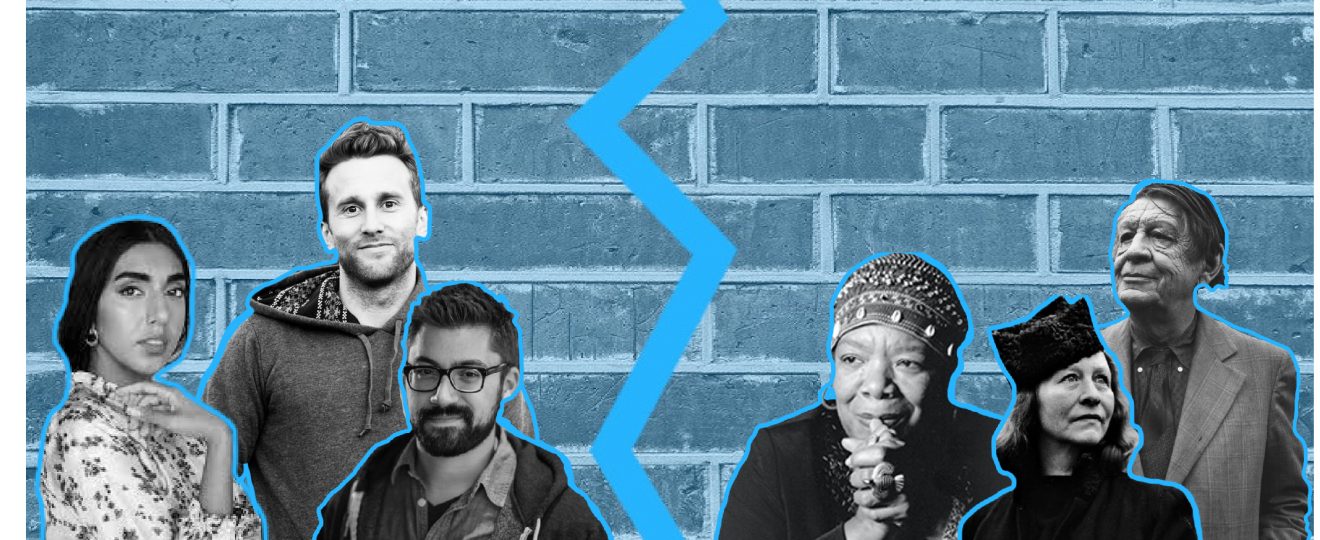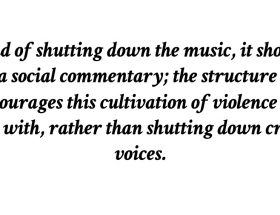As we delve deeper in the so-called smartphone age, a new generation of poets is claiming social media as its writing space, its publisher, and its marketing team. But the adoption of social media for displaying examples of ‘micropoetry’ – forging the likes of globally renowned Rupi Kaur, self-proclaimed Poet Laureate of Twitter Brian Bilston, or the love-struck verse of r.H. Sin – is an immensely polarising literary phenomenon.
Echoing Harold Bloom’s famous critique on performance poetry, both journalists and literary critics alike report that ‘contemporary poetry is dead.’ With a perception of vapidity and superficiality, Sheila Marikar described reading Instagram poetry on the screen as ‘merely window shopping’ (The New Yorker, 2017). And yet, this isn’t a one-sided parley: as literary critics, scholars and writers join the debate over its validity as a literary genre, we can view a tension between this digital, literary phenomenon and the Academy.
On the positive side, according to poet Sam Riviere, ‘poetry takes a naturally subversive form and the best and most effective poetry of any period is an alternative poetry to that which came before it.’ Some who worry about the stagnation of poetry’s development view multimedia and digital poetry as the way forward. There’s no doubt that the digital medium provides a unique way of displaying one’s work, the interactive capabilities of social networking sites allowing writers to reach and subsequently communicate with broad(er) audiences (in the developed world, at least). Why not take advantage of this medium?
And yet, the physical constraints of the screen (or Twitter’s character limit) have forged a shorter poetic style. We’re no longer reading a Ginsbergian epic poem; now we’re presented with a single stanza at most. The message is now short, sharp, and clear. Or is it just vague, pithy, and suggestive? Where social media provides a populist platform, all we require is internet access and we can all become poets, publishing and promoting our work. Though we can’t contend that the next generation of Instagrammers are all talented wordsmiths, we also can’t refute that the next globally renowned poet could just be starting out on Instagram. They could be carefully curating their poem- posts as we speak. It is exciting, but without the comfort of literary convention can be unbridled.
This #poetry trend is so reminiscent of Anita Tension’s satirical collection #POETRYISNOTDEAD (2017). Tension adopts the hashtag ‘#’ which is itself appropriating the digital into its poetic form, and perpetuates the style, form, and content of online poetry. But she is no uncomplicated champion of the form –with the sub-title, ‘A Parody of the State of Poetry,’ she presents a satirical undertone that critiques the Instagram poetry phenomenon; ‘where what some deem greeting card poetry have exceeded novels like The Odyssey.’ Tension has joined the *ahem…* tense debate and yet, it doesn’t seem clear which side she’s taking. There is, to an extent, derision of both digital poetry and of those that value the canon – she alludes to the sheer number of poems now published online with a sneer, describing that although some talented poets exist on Instagram, they are drowning in a sea of #poetry hashtags. Although Tension’s message isn’t clear, she nevertheless brings to the forefront the notion that there is (and arguably always will be) a tension between the established and the contemporary (digital) in the literary world.
Indeed, mere mention of The Odyssey, a behemoth text next to the classic 2-verse posts that we’ve come to expect from Kaur or Sin, brings us to my favourite pastime: challenging the canon.
When Bloom declared poetry dead upon the energetic and evocative revival of performance poetry, he seemed to completely disregard anything that presented originality to the already-established oeuvre. If reading poetry on the screen really is a kind of ‘window shopping,’ then surely this will lead non-readers right onto the bookshop’s doorstep? Wouldn’t critical thought agree that exposing poetry to the ‘vulgar’ audience is something positive? I’m no venture capitalist, but I can certainly see the promotional virtues of social media here, especially in considering current, post-pandemic expressions.
John Maher’s 2018 article ‘Can Instagram make poetry sell again?’ discusses this all-too-important economic underpinning. And my supposed naivety is vindicated as in fact, BookScan reported that poetry sales in 2017 were twice what they were in 2016, following the print publication of infamous Instagram poet, Rupi Kaur. There’s a reason why this short, so-called ‘greeting-card poetry’ is exceeding canonical texts like The Odyssey. Where shallow becomes palatable, where apathetic becomes concise: whether or not this micropoetry is here to stay, it should certainly be viewed as a valid part of our poetic tradition.
Is this condensed quality that so many journalists and critics scoff at the fault of the democracy of social media? Although the social media space allows any user the cultural capital to share and promote their work, does this accessibility necessarily mean we all have the skill? Definitely not. But, the question remains, is poetry really dead? To me at least, social media appears to be a bustling marketplace of vivid imagery and visual poetry. Not all poets skilled, not all texts deep, but I nevertheless feel as though we’re witnessing the vanguard of contemporary literature. To those unafraid of challenging the musty canon, long live #poetry!

Art by Jade Fagersten




